Vendors Show Off First X670, X670E AM5 Motherboards for Zen 4 CPUs
Enthusiast motherboards for Ryzen 7000
AMD on Thursday gave a sneak peek at its next-generation high-end platforms for its upcoming Ryzen 7000-series (Raphael) Zen 4 processors in AM5 form-factor together with its motherboard partners. Since AMD's X670 and X670E platforms will cater to enthusiasts, they will pack the most innovative features as well as provide advanced overclocking capabilities.
AMD's X670 and X670E Platforms
First and foremost, AMD confirmed that high-end AM5 motherboards for next-generation processors would utilize its X670 and X670E chipsets. The X670 will support overclocking and appease 'regular' enthusiasts. In contrast, the X670E (dual-chip design) features 'unparalleled' expandability, extreme overclocking, and PCIe 5.0 connectivity for up to two graphics cards and an M.2 slot for an NVMe SSD.
AMD itself outlines several key features of its AM5 platforms that will differentiate them from previous-generation motherboards, including TDP of up to 170W to maximize the performance of next-generation processors with up to 16 Zen 4 cores, up to 24 PCIe 5.0 lanes (x16 for a graphics card, x4 for an SSD, and x4 to connect to the chipset), dual-channel DDR5 memory support, up to four DisplayPort 2 or HDMI 2.1 outputs (which confirms that there will be AM5 processors with integrated graphics), up to 14 USB ports (including several USB 3.2 Gen 2x2 ports as well as USB-C), and Wi-Fi 6E support on select motherboards.



Motherboard makers traditionally try to differentiate themselves from the competition, so they will be offering AMD X670/X670E platforms with beefed-up CPU voltage regulating modules (VRM) capable of delivering hundreds of watts of power to AMD's new processors to boost their overclocking potential further. What is a bit surprising is that neither AMD nor its partners talked about supported DDR5 speeds on the upcoming AM5 platforms.
Some AMD X670/X670E mainboards will also come with an M.2-25110 slot(s) for upcoming high-performance SSDs with a PCIe 5.0 x4 interface that requires more sophisticated cooling. Motherboard makers prepare rather sophisticated cooling solutions for next-generation drives to ensure their consistent performance.
Regarding connectivity, since USB 3.2 Gen 2x2 is not a widespread standard, there will be motherboards with USB4 or Thunderbolt 3/4 ports supported by an external controller (though it is unclear which one) for those with Thunderbolt 3/4 or next-gen USB 4 devices. Also, some mainboards will come with a 2.5GbE port enabled by an Intel controller, whereas the most advanced platforms will come with a 10GbE port enabled by Marvell's AQtion silicon.
As for Wi-Fi 6E, some AMD X670/X670E motherboards will support the latest WLAN connectivity using AMD's RZ616 Wi-Fi 6E controller developed by MediaTek, whereas others will use Intel's Wi-Fi 6E solutions.
Get Tom's Hardware's best news and in-depth reviews, straight to your inbox.
Now, let's look at what Asus, ASRock, Biostar, Gigabyte, and MSI are prepping for early AM5 adopters.
Asus
The world's largest motherboard maker is readying two platforms to support AMD's AM5 rollout — the ROG Crosshair X670E Extreme and the ROG Crosshair X670E Hero — but more are coming. The mainboards will feature a VRM based on the Infineon ASP2205 power management IC (PMIC) and Vishay SIC850 110A smart power stages. In addition, the Extreme model will feature a 20+2-stage power delivery, whereas the Hero will come with 18+2-stage VRM.




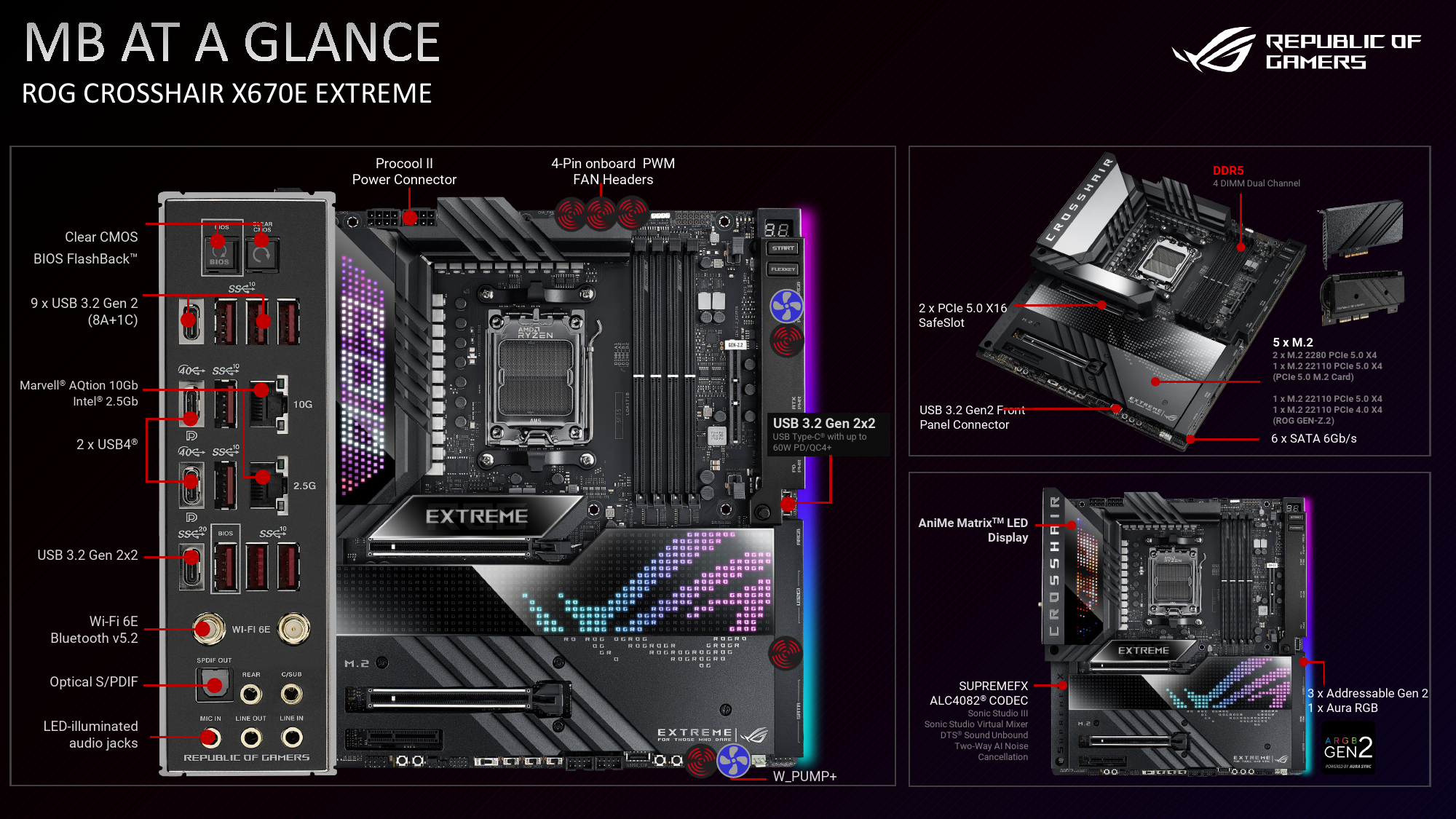








Of course, Asustek's ROG Crosshair X670E Extreme and ROG Crosshair X670E Hero will come with premium connectivity, including two USB4 ports, a 2.5GbE/10GbE connector, an advanced audio subsystem, and a Wi-Fi 6E (Intel AX210) adapter.
ASRock
ASRock's initial AM5 lineup will consist of five motherboards, including two flagship X670E Taichi Carrara and X670E Taichi platforms, X670E Steel Legend, X670E Pro RS, and X670E PG Lightning.




These motherboards will use an eight-layer printed circuit board (not the maximum number of layers possible, so to speak), a high-performance active cooler for M.2 SSDs, and USB 4 Type-C connectors.
Biostar
Being a relatively new entrant to the enthusiast motherboard market, Biostar will have one X670E motherboard ready for the AM5 launch — the X670E Valkyrie.














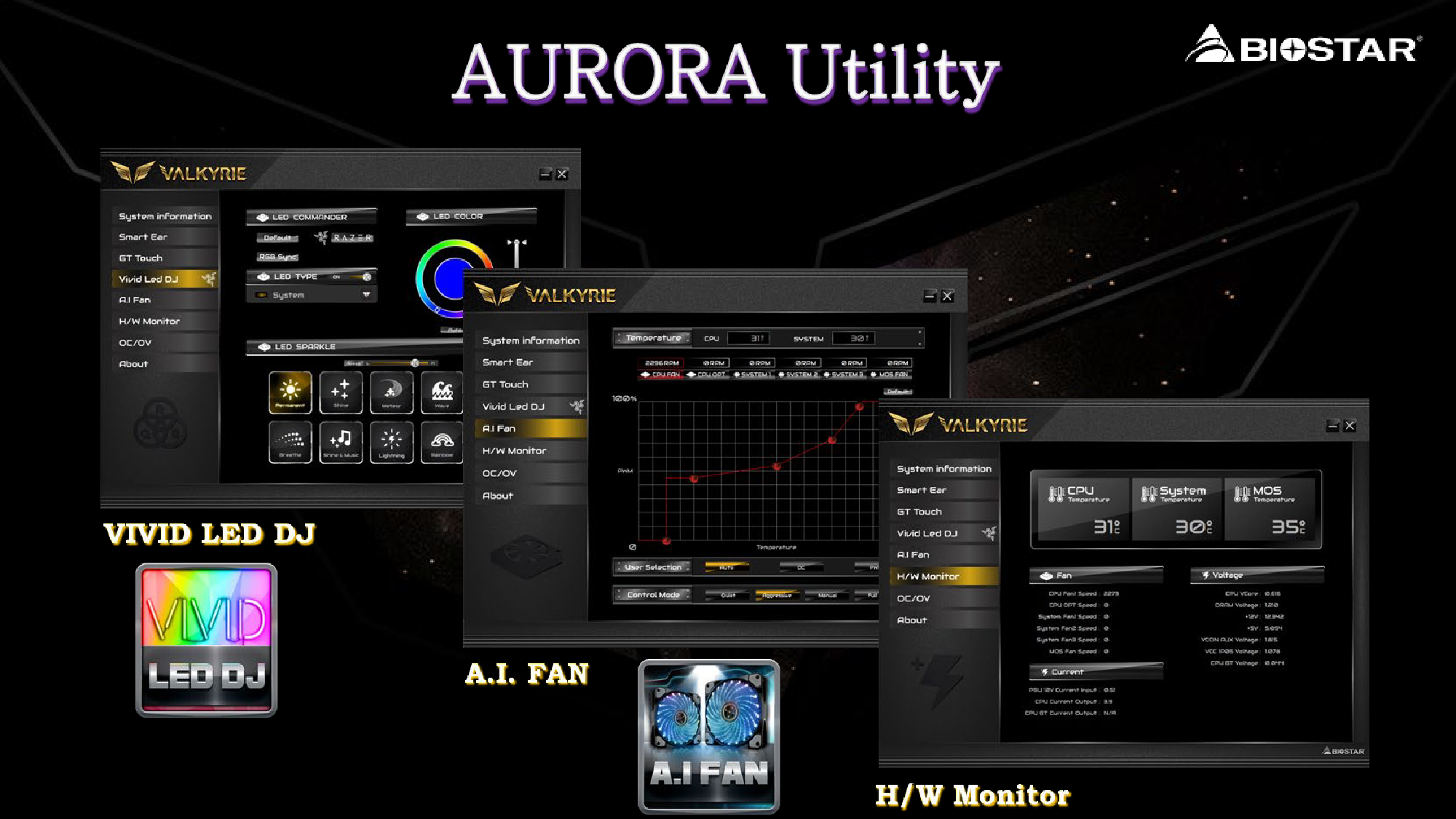


This platform will feature a 22-phase VRM with 105A Dr.MOS stages, two PCIe Gen5 x16 (operating in x8 or x16 mode), a PCIe Gen4 x16 slot (operating in x4 mode), four M.2-2280/22110 slots PCIe Gen4/5 with advanced heat spreaders, a 2.5GbE connector, a USB 3.2 Gen 2x2 port, and two display outputs (DP 1.4, HDMI 2.1).
Gigabyte
Gigabyte preps four high-end AMD X670E/X670 motherboards, including the X670E Aorus Xtreme, X670E A Aorus Master, X670 Aorus Pro AX, and X670 Aorus Elite AX. The flagship X670E Aorus Xtreme will feature an 18+2+2 power delivery design based on the Renesas RAA229628 PMIC, 18 Renesas RAA2201054 SPS 105A V-core power stages, two ON NCP303160 SPS 60A SoC power stages, and two Renesas ISL99390 SPS 90A power stages. Other platforms in the lineup will use a 16+2+2 VRM featuring different PMICs and MOSFETs (see the table in the gallery below).
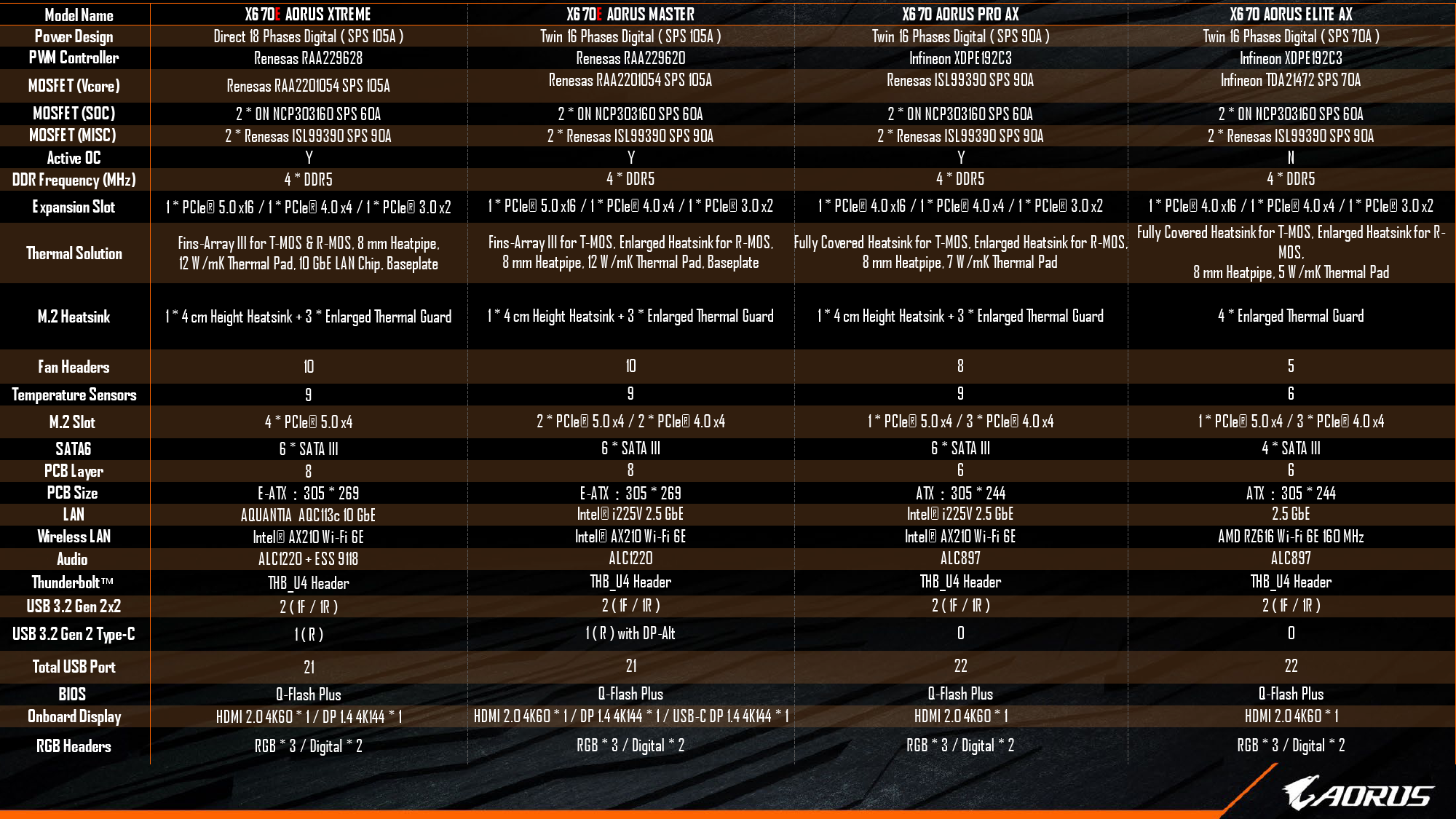




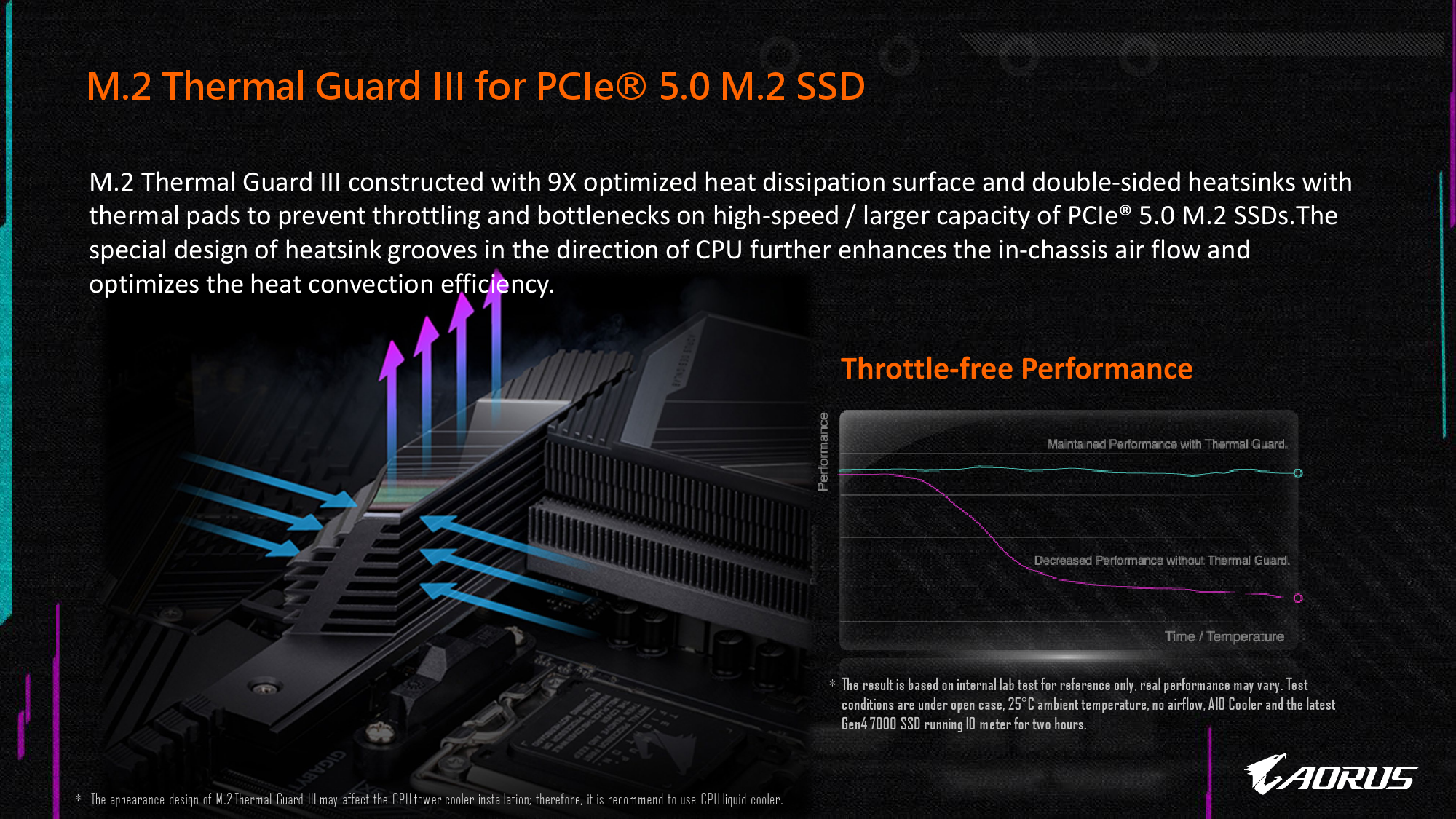


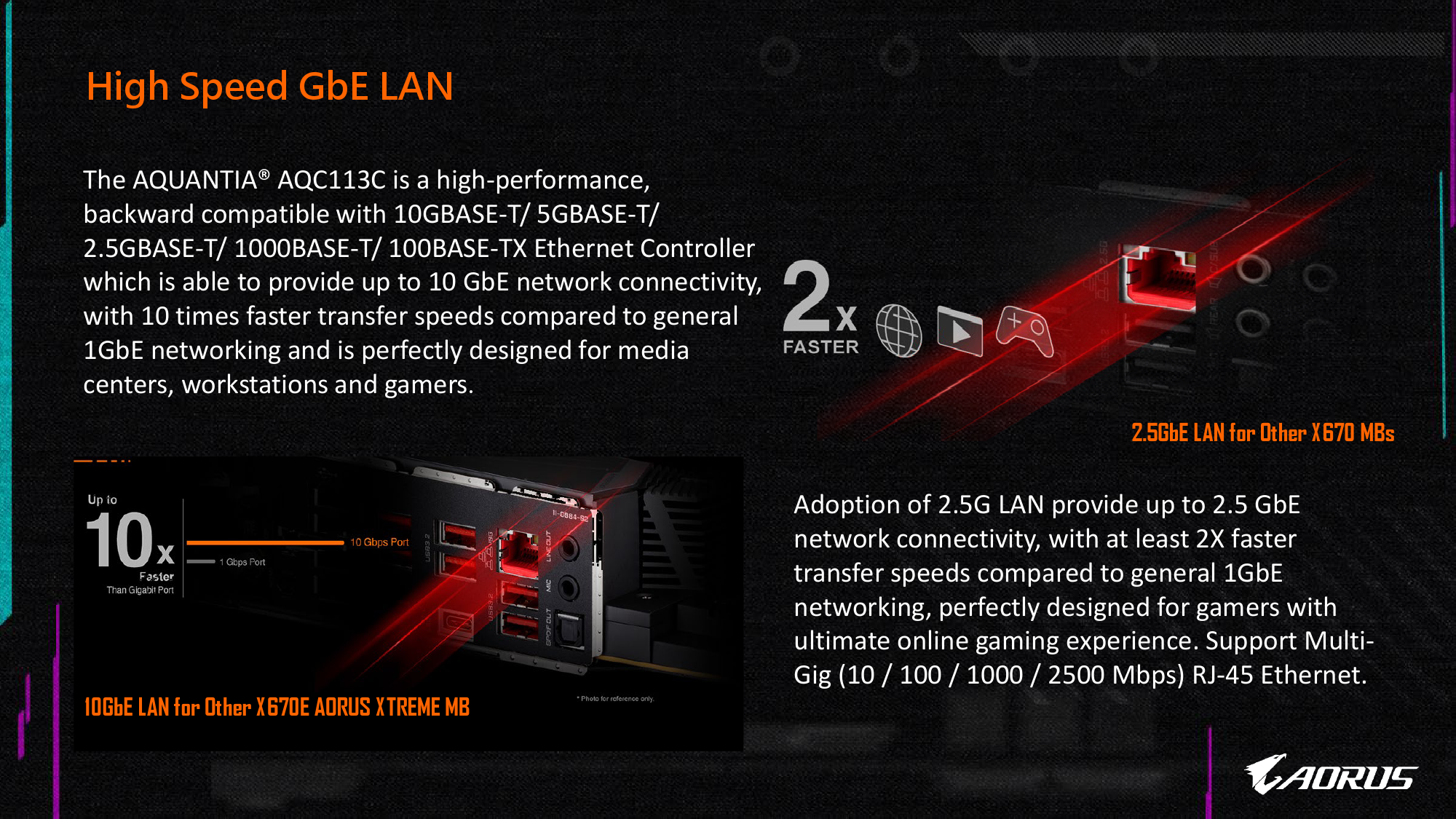




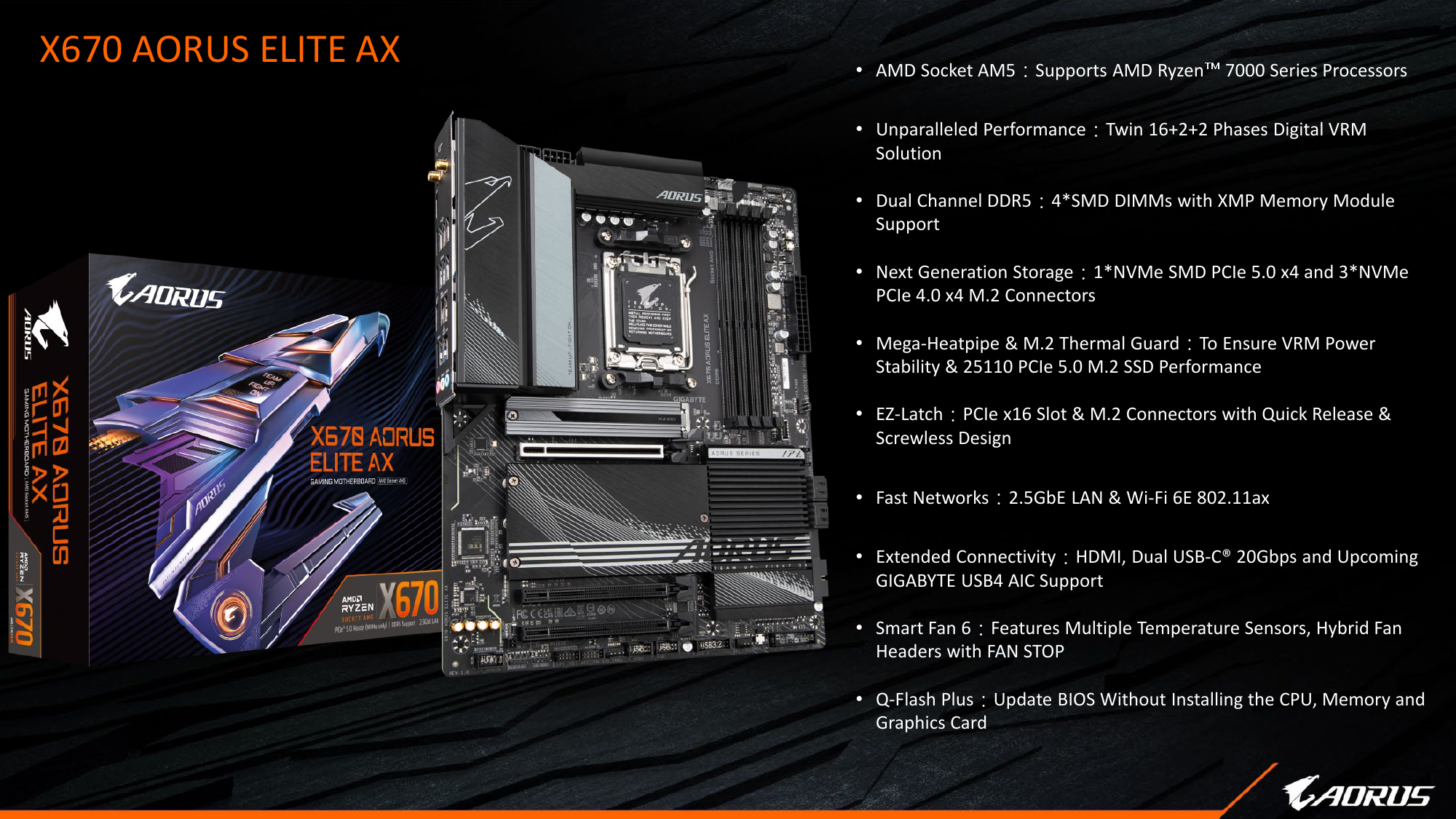
The most exciting part about Gigabyte's AMD X670E and X670 motherboards is that only the former will support a PCIe 5.0 interface, whereas the latter will only feature PCIe 5.0 for SSDs. Meanwhile, all of Gigabyte's Aorus AM5 mainboards will have at least one M.2-25110 slot for next-gen SSDS, a 2.5GbE/10GbE port, a USB 3.2 Gen 2x2 connector, one or two display outputs, and a THB_U4 header for Thunderbolt.
MSI
MSI is working on four high-end AM5 motherboards: the X670E-based MEG X670E Godlike, MEG X670E Ace, MPG X670E Carbon Wi-Fi, and the X670-powered Pro X670-P Wi-Fi. The flagship MEG X670E Godlike platform will feature a 24+2+1-phase power delivery (with 105A power phases for V-core), whereas the slightly less advanced MEG X670E Ace will come with a 22+2+1 VRM (with 90A power phases for V-core). Speaking of MSI's VRMs, the company's motherboards will use an all-new VRM cooling system with direct touch heat pipes and a MOSFET baseplate.





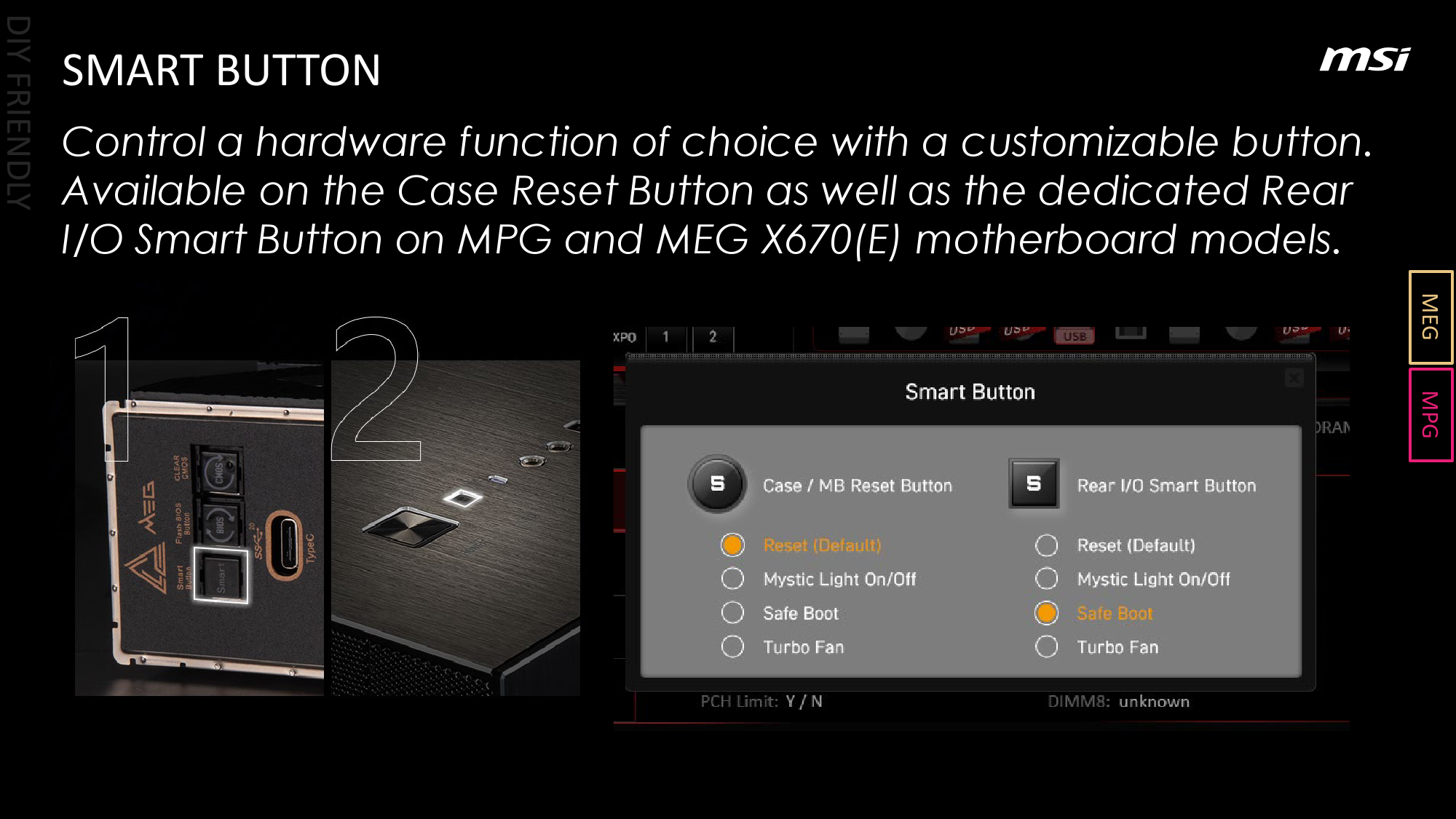






All four MSI AM5 motherboards will come with M.2 Shield Frozr coolers for next-generation SSDs with a PCIe 5.0 x4 interface, a 2.5GbE connector, and a Wi-Fi 6E adapter. Furthermore, the flagship MEG X670E Godlike and MEG X670E Ace will come with MSI's M.2 Xpander-Z Gen5 Dual adapter to house two M.2-25110 drives with a PCIe 5.0 x4 interface.
Summary
AMD is expected to release its Ryzen 7000-series 'Raphael' processors and AM5 desktop platforms this September. The new platforms will bring numerous innovations, including DDR5, PCIe 5.0, USB 3.2 Gen2x2, and Wi-Fi 6E support. By now, five leading makers of motherboards for the DIY market have announced 16 motherboards based on AMD's X670 and X670E chipsets with different features and which will cover a broad range of price points.

Anton Shilov is a contributing writer at Tom’s Hardware. Over the past couple of decades, he has covered everything from CPUs and GPUs to supercomputers and from modern process technologies and latest fab tools to high-tech industry trends.
-
bdcrlsn Biostar isn't "relatively new" to enthusiast motherboards, no one remember the T-Power boards from years past?Reply -
old_rager I'm struggling to come to grips that my 10 year old PC config that has an X16 (GPU) and an X8 (Raid Card) slot will not be supported on the new AM5 mobo's?!? 😲 If I understand correctly, according to the statement made in the article, "...with up to 16 Zen 4 cores, up to 24 PCIe 5.0 lanes (x16 for a graphics card, x4 for an SSD, and x4 to connect to the chipset)", this would mean that only 20 PCIe 5.0 lanes are available to the user - as the chipset is taking up 4 of those 24 PCIe 5.0 lanes, yes?Reply
And here was I hoping that I could run my current config (GPU (x16) and External Raid Card (x8) with at least 2 x NVMe's in a Raid 0 config - all on the PCIe 5.0 environment... 😭
Having said all of the above, I notice in Biostar's product specs (https://drive.google.com/file/d/1tljBzrCW1gimWiBNSim42DjnRd4sehF0/view?usp=sharing) that you can have run two x16 slots (in either x16 or x8) as well as 2 x M2's all in PCIe 5.0 mode - somehow, I don't think that these will all be available at the same time?!? So, not sure what to think here as I've been literally waiting years now to upgrade my PC, and in my opinion, this is now the perfect time to do so.
Will the AM5 serve me well, or will I need to look at the Threadripper environment - which is something I really don't won't to do due to the extreme pricing?!? 🤔 -
TCA_ChinChin Replyold_rager said:I'm struggling to come to grips that my 10 year old PC config that has an X16 (GPU) and an X8 (Raid Card) slot will not be supported on the new AM5 mobo's?!? 😲 If I understand correctly, according to the statement made in the article, "...with up to 16 Zen 4 cores, up to 24 PCIe 5.0 lanes (x16 for a graphics card, x4 for an SSD, and x4 to connect to the chipset)", this would mean that only 20 PCIe 5.0 lanes are available to the user - as the chipset is taking up 4 of those 24 PCIe 5.0 lanes, yes?
And here was I hoping that I could run my current config (GPU (x16) and External Raid Card (x8) with at least 2 x NVMe's in a Raid 0 config - all on the PCIe 5.0 environment... 😭
I'm not that knowledgeable about this, but the bandwidth is definitely there. It just depends on how motherboard makers decide to split those lanes. I'm almost certain you could run 1 GPU plus one Raid card and have perfectly fine speeds, seeing as the top end motherboards, at least x670/e should support dual GPUs setups (even if they aren't that popular), which definitely would use more lanes than a single GPU + Raid card.
The article also says: "In contrast, the X670E (dual-chip design) features 'unparalleled' expandability, extreme overclocking, and PCIe 5.0 connectivity for up to two graphics cards and an M.2 slot for an NVMe SSD."
If it can support 2 GPUs and an NVMe SSD, I'm sure you can swap one of those GPUs for the Raid card. And PCIe generation matters too. PCIe 5.0 bandwidth is significantly higher than whats on a 10 year old PC (probably gen 3?) and so potentially an x4 or x8 PCIe 5.0 slot could substitute for a x16 PCIe 3.0 slot, depending on the physical slot size and how the motherboard makers split up the lanes from the CPU and chipset(s). -
escksu Replybdcrlsn said:Biostar isn't "relatively new" to enthusiast motherboards, no one remember the T-Power boards from years past?
Yes, Biostar has been around for ages..... Their T-Force AMD boards!! Just that it wasn't that popular compared to the usual brands. -
old_rager TCA, Thanks for your thoughts. But if I want to one 1 x GPU (16 lanes), 1 x Raid Card (x8) and 2 x NVMe's in Raid 0 (2 by x4 lanes), there's no way I'm going to be able to do this - even if all 24 lanes were available to me, yes?Reply
BTW, am not sure if you saw my Biostar update to my post before sending your response.
Again, thank you for your thoughts - and yes, I'm running Gen 3. Well picked!!! 🤣 -
escksu Replyold_rager said:Having said all of the above, I notice in Biostar's product specs (https://drive.google.com/file/d/1tljBzrCW1gimWiBNSim42DjnRd4sehF0/view?usp=sharing) that you can have run two x16 slots (in either x16 or x8) as well as 2 x M2's all in PCIe 5.0 mode - somehow, I don't think that these will all be available at the same time?!? So, not sure what to think here as I've been literally waiting years now to upgrade my PC, and in my opinion, this is now the perfect time to do so.
Will the AM5 serve me well, or will I need to look at the Threadripper environment - which is something I really don't won't to do due to the extreme pricing?!? 🤔
For the 2nd nvme slot, it has to get 4 lanes from the PCIE 16x slot.
I am not sure hows the configuration like, but its possible that 2nd PCIE slot will not work once both nvme slots are populated.
Its also possible that 1st PCIE slot is 16x while 2nd slot is strictly 4x only. This way, if you populate 2nd nvme slot, the 1st PCIE will become 8x, then 2nd slot is still 4x.
I don't think there will be any PCIE 5.0 from chipset. chipset may be strictly PCIE 4.0 only. Btw, there are only 4 lanes for chipset. So, running PCIE 5.0 nvme drives off chipset will likely result in bottleneck. -
escksu Replyold_rager said:TCA, Thanks for your thoughts. But if I want to one 1 x GPU (16 lanes), 1 x Raid Card (x8) and 2 x NVMe's in Raid 0 (2 by x4 lanes), there's no way I'm going to be able to do this - even if all 24 lanes were available to me, yes?
BTW, am not sure if you saw my Biostar update to my post before sending your response.
Again, thank you for your thoughts - and yes, I'm running Gen 3. Well picked!!! 🤣
No, thats not possible. Only 20 lanes are availalbe to user. Also, if you are using a RAID card, you need to use 2nd slot. Some boards have 8/8x while some 16(8x when 2nd slot populated)/4x.
Currently there are no consumer PCIE 5.0 RAID cards. Perhaps it will start appearing this year or next year. PCIE 5.0 PLX chips are avaialbe since 2021. -
drlava I am stoked about finally building a new machine after 14 years for these new chips, but whoa a lot has changed. Where have all the expansions slots gone? My P6T SE has 6, vs these 2-3. What happened to SATA RAID 5? I don't see any SATA ports on these guys, my current P6T SE has 6 internal and 1 external PATA ports..Reply
EDIT: I see the SATA ports now going off to the right of the boards, along with other connectors. 👍 -
old_rager Escksu, my raid card is a PCIe 3.0 x8 Adaptec 2277000-R Single 8885 raid controller supporting 12Gb/s. So regardless, it's going to take up 8 lanes I'm assuming, unless there is someway the system would only use 2 of the PCIe 5.0 lanes to actually transfer the data - which should equal what 8 lanes would do in the PCIe 3.0 world. As I'm running 120TB of storage, my raid card is a mandatory requirement.Reply -
Unolocogringo Could be wrong but my understanding is that the X670E boards will have 2 chipsets/ southbridges. Each with a 4x connection to the CPU.Reply
With each chipset having 24 PCIE lanes available.
So lots of connection possibilities for the board makers.